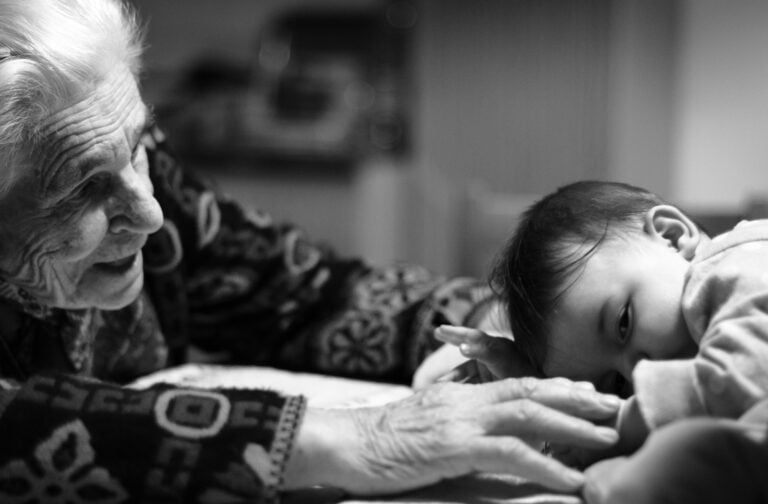Pulmonary edema is a condition that occurs when fluid builds up in the lungs, making it difficult to breathe. This can be a serious and potentially life-threatening condition, especially for seniors. In this article, we will discuss ways to manage pulmonary edema in seniors and provide tips for reducing symptoms and improving quality of life.
What is Pulmonary Edema and What Causes it?
Pulmonary edema is a condition that occurs when fluid builds up in the air spaces of the lungs, making it difficult to breathe. This fluid accumulation can be caused by a variety of factors, including:
- Heart failure: Heart failure occurs when the heart is unable to pump enough blood to meet the body’s needs. This can lead to a build-up of fluid in the lungs, resulting in pulmonary edema.
- Acute respiratory distress syndrome (ARDS): ARDS is a severe respiratory condition that can be caused by infections, injuries, or other conditions. It can lead to fluid accumulation in the lungs, resulting in pulmonary edema.
- High altitude: At high altitudes, the air is thinner, making it more difficult to get oxygen. This can lead to fluid accumulation in the lungs and can cause pulmonary edema in some individuals.
Symptoms of pulmonary edema may include difficulty breathing, coughing, chest pain, and a feeling of tightness in the chest. Pulmonary edema can be especially serious for seniors, as they may be more vulnerable to the effects of the condition due to their age.
Risk Factors for Pulmonary Edema in Seniors
There are several factors that can increase the risk of developing pulmonary edema in seniors, including:
- Heart disease: Seniors with heart disease, such as coronary artery disease or heart failure, are at an increased risk for developing pulmonary edema.
- Chronic obstructive pulmonary disease (COPD): COPD is a chronic respiratory condition that can cause difficulty breathing and can increase the risk of pulmonary edema.
- High blood pressure: High blood pressure, or hypertension, can put extra strain on the heart and can increase the risk of pulmonary edema.
- Kidney disease: Kidney disease can lead to fluid accumulation in the body, increasing the risk of pulmonary edema.
Preventing Pulmonary Edema in Seniors
There are several steps that can be taken to reduce the risk of developing pulmonary edema in seniors:
- Manage chronic conditions: Seniors with conditions such as heart disease, COPD, or high blood pressure should work with their healthcare team to manage their conditions and reduce the risk of pulmonary edema.
- Exercise regularly: Regular physical activity can help to improve cardiovascular health and reduce the risk of pulmonary edema. Seniors should consult with their healthcare provider before starting an exercise program.
- Practice good hygiene: Seniors can reduce their risk of respiratory infections, which can lead to pulmonary edema, by practicing good hygiene, such as washing their hands frequently and covering their mouth and nose when sneezing or coughing.
Managing Pulmonary Edema Symptoms in Seniors
If a senior has been diagnosed with pulmonary edema, there are several steps that can be taken to manage symptoms and improve quality of life:
- Medications: A healthcare provider will prescribe medications to help manage pulmonary edema, such as diuretics to remove excess fluid from the body, medications to improve heart function, and oxygen therapy to increase oxygen levels in the blood.
- Oxygen therapy: Seniors with pulmonary edema may need supplemental oxygen to help improve oxygen levels in the blood. This may involve using a nasal cannula, face mask, or ventilator, depending on the severity of the condition.
- Pulmonary rehabilitation: Pulmonary rehabilitation is a program that can help seniors with pulmonary edema to improve their breathing, increase their endurance, and manage their symptoms. Pulmonary rehabilitation may include exercises, education, and support to help seniors better manage their condition.
- Palliative care: For seniors with advanced pulmonary edema or other serious health conditions, palliative care may be recommended to manage symptoms and improve quality of life. Palliative care can include pain management, symptom control, and support for the senior and their family.
Coping with Pulmonary Edema as a Caregiver
If you are caring for a senior with pulmonary edema, it can be a challenging and overwhelming experience. It is important to take care of your own physical and emotional well-being in order to provide the best possible care for the senior. Here are a few tips for coping with pulmonary edema as a caregiver:
- Seek support: Don’t hesitate to reach out to family, friends, or a support group for help and emotional support. It can be helpful to talk to others who are going through similar experiences.
- Take breaks: It is important to take breaks and take care of yourself, even if it is just for a few minutes at a time. Find activities that help you relax and recharge, such as taking a walk, reading a book, or practicing meditation.
- Learn as much as you can about pulmonary edema: Educating yourself about pulmonary edema can help you to understand the condition and feel more in control of the situation. Talk to the senior’s healthcare provider or a registered respiratory therapist to learn more about the condition and how to manage it.
- Follow the treatment plan: It is important to follow the treatment plan as recommended by the healthcare team to help manage the senior’s pulmonary edema and reduce the risk of complications. This may include taking medications as directed and following oxygen therapy guidelines.
take breaks and take care of yourself, even if it is just for a few minutes at a time. Find activities that help you relax and recharge, such as taking a walk, reading a book, or practicing meditation.
- Learn as much as you can about pulmonary edema: Educating yourself about pulmonary edema can help you to understand the condition and feel more in control of the situation. Talk to the senior’s healthcare provider or a registered respiratory therapist to learn more about the condition and how to manage it.
- Follow the treatment plan: It is important to follow the treatment plan as recommended by the healthcare team to help manage the senior’s pulmonary edema and reduce the risk of complications. This may include taking medications as directed and following oxygen therapy guidelines.
Conclusion
Pulmonary edema can be a serious and potentially life-threatening condition for seniors. By working with a healthcare team to manage symptoms, taking steps to prevent pulmonary edema, and caring for their own well-being, caregivers can help seniors to maintain their health and quality of life.
References:
- American Lung Association. (2021). Pulmonary edema. Retrieved from https://www.lung.org/lung-health-diseases/lung-problems/pulmonary-edema
- Mayo Clinic. (2021). Pulmonary edema. Retrieved from https://www.mayoclinic.org/diseases-conditions/pulmonary-edema/symptoms-causes/syc-20355467
- National Heart, Lung, and Blood Institute. (2021). Pulmonary edema. Retrieved from https://www.nhlbi.nih.gov/health-topics/pulmonary-edema




























